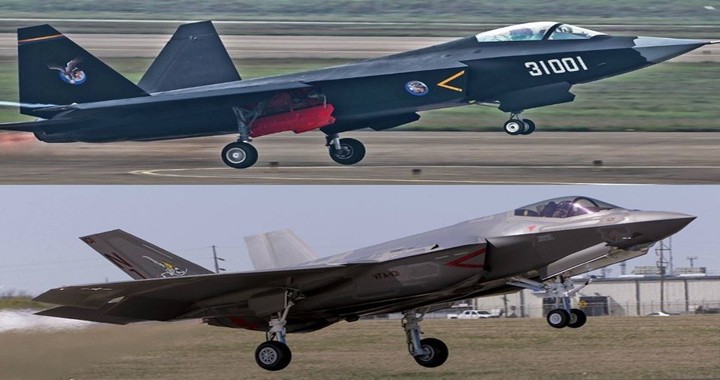“The fifth generation Chinese fighter aircraft looks a lot like the F-35, that’s because it is the F-35, they just stole it,” Bolton said during a press conference in Kiev.
He did not specify which Chinese aircraft he had in mind – but it would take a lot of squinting for anyone looking at the J-20, the only Chinese 5th-gen fighter in service, to say it looks like the F-35. It’s significantly larger, has two engines instead of one, features prominent nose canards, etc. Basically, the only thing the two have in common is that the machines are modern stealth fighter jets.
Bolton could have been showing a deeper knowledge of the Chinese aircraft industry and had the Shenyang FC-31 fighter in mind.
This one does look similar to the F-35. However, only a couple of prototypes have been built over the past decade, and they’ve barely ever been seen flying. According to media reports, the plane is riddled with technical issues – which suddenly makes the likeness to the American jet both more evident and more ironic.
The FC-31 also has two engines, but it does look a bit similar. Only a few prototypes have ever been built and presented over the last 10 years. And this is where, specifically, the similarities with the F-35 fighter jet come – the FC-31 is riddled with numerous and continuous technical issues, so it might, in fact, really be a stolen F-35, since that is also the US fighter jet’s biggest “feature.”
All of these similarities are a result of constraints in shape and form, at the current state of technology and necessity of stealth, they’re not something exclusive that the United States came up with.
Regardless, John Bolton continues with his wild accusations, after claiming that Russia stole its hypersonic technology from the US and is now vastly ahead in terms of it.
“The US and China are having significant differences over trade now,” Bolton said. “It’s not just about the imbalance of exports and imports between the United States and China. … It’s about the fundamental reasons why that imbalance exists.
The ongoing trade tensions between the United States and China further escalated on Friday, when the Chinese State Council said tariffs ranging from 5 to 10 percent would be applied to $75 billion worth of US goods, with some taking effect on September 1 and others on December 15, and a 25-percent duty being introduced on US cars.
Later on Friday, Trump said that Washington would raise the existing tariffs on $250 billion worth of Chinese goods to 30 percent from the current rate of 25 percent starting October 1. In addition, the tariffs would be raised to 15 percent from 10 percent on $300 billion worth of Chinese goods starting from September 1.

